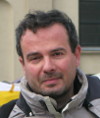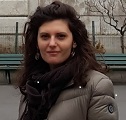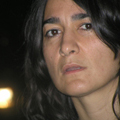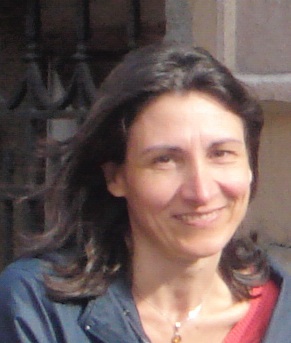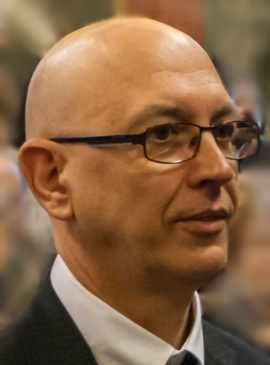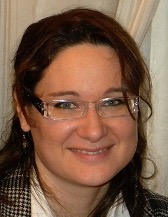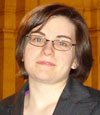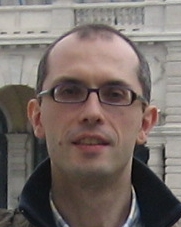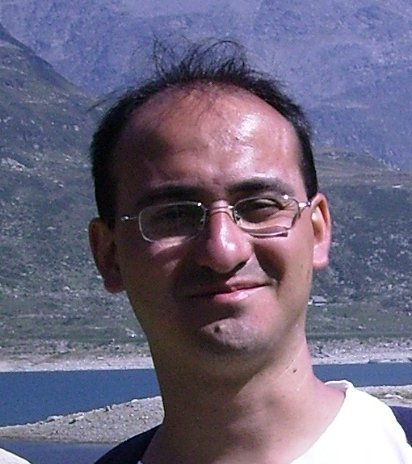Studying at the University of Verona
Here you can find information on the organisational aspects of the Programme, lecture timetables, learning activities and useful contact details for your time at the University, from enrolment to graduation.
Academic calendar
The academic calendar shows the deadlines and scheduled events that are relevant to students, teaching and technical-administrative staff of the University. Public holidays and University closures are also indicated. The academic year normally begins on 1 October each year and ends on 30 September of the following year.
Course calendar
The Academic Calendar sets out the degree programme lecture and exam timetables, as well as the relevant university closure dates..
| Period | From | To |
|---|---|---|
| I semestre | Oct 1, 2018 | Jan 31, 2019 |
| II semestre | Mar 4, 2019 | Jun 14, 2019 |
| Session | From | To |
|---|---|---|
| Sessione invernale d'esame | Feb 1, 2019 | Feb 28, 2019 |
| Sessione estiva d'esame | Jun 17, 2019 | Jul 31, 2019 |
| Sessione autunnale d'esame | Sep 2, 2019 | Sep 30, 2019 |
| Session | From | To |
|---|---|---|
| Sessione Estiva | Jul 17, 2019 | Jul 17, 2019 |
| Sessione Autunnale | Nov 20, 2019 | Nov 20, 2019 |
| Sessione Invernale | Mar 17, 2020 | Mar 17, 2020 |
| Period | From | To |
|---|---|---|
| Sospensione dell'attività didattica | Nov 2, 2018 | Nov 3, 2018 |
| Vacanze di Natale | Dec 24, 2018 | Jan 6, 2019 |
| Vacanze di Pasqua | Apr 19, 2019 | Apr 28, 2019 |
| Festa del Santo Patrono | May 21, 2019 | May 21, 2019 |
| Vacanze estive | Aug 5, 2019 | Aug 18, 2019 |
Exam calendar
Exam dates and rounds are managed by the relevant Science and Engineering Teaching and Student Services Unit.
To view all the exam sessions available, please use the Exam dashboard on ESSE3.
If you forgot your login details or have problems logging in, please contact the relevant IT HelpDesk, or check the login details recovery web page.
Should you have any doubts or questions, please check the Enrollment FAQs
Academic staff
 mariacaterina.baruffi@univr.it
mariacaterina.baruffi@univr.it
 maurizio.boscaini@univr.it
maurizio.boscaini@univr.it
 alberto.burato@univr.it
alberto.burato@univr.it
 rossana.capuani@univr.it
rossana.capuani@univr.it
 vittoria.cozza@univr.it
vittoria.cozza@univr.it
 mila.dallapreda@univr.it
mila.dallapreda@univr.it
Study Plan
The Study Plan includes all modules, teaching and learning activities that each student will need to undertake during their time at the University.
Please select your Study Plan based on your enrollment year.
1° Year
| Modules | Credits | TAF | SSD |
|---|
Mathematical analysis 1
Computer Architecture
2° Year activated in the A.Y. 2019/2020
| Modules | Credits | TAF | SSD |
|---|
3° Year activated in the A.Y. 2020/2021
| Modules | Credits | TAF | SSD |
|---|
1 module to be chosen among the following| Modules | Credits | TAF | SSD |
|---|
Mathematical analysis 1
Computer Architecture
| Modules | Credits | TAF | SSD |
|---|
| Modules | Credits | TAF | SSD |
|---|
1 module to be chosen among the followingLegend | Type of training activity (TTA)
TAF (Type of Educational Activity) All courses and activities are classified into different types of educational activities, indicated by a letter.
Type D and Type F activities
Modules not yet included
Computer Graphics (2020/2021)
Teaching code
4S00043
Credits
6
Language
Italian
Also offered in courses:
- Scientific visualization - Teoria of the course Bachelor's degree in Bioinformatics
- Scientific visualization - Laboratorio of the course Bachelor's degree in Bioinformatics
Scientific Disciplinary Sector (SSD)
INF/01 - INFORMATICS
The teaching is organized as follows:
Teoria
Laboratorio
Learning outcomes
This course aims at providing the student with the tools needed to master the algorithms and computational methods upon which many interactive computer graphics applications are based. The focus is on understanding the theory (geometry, radiometry) and the computational issues (algorithms, programming) that lie behind computer generated images.
At the end of the course, the students will be able to:
Understand the functionality of the graphics pipeline of modern computers;
Understand the basics of 3D modeling and rendering algorithms;
Design and implement simple interactive graphics/visualization applications;
Describe effectively the technical feature of the applications developed;
Use the acquired knowledge as a basis to pursue Visual Computing studies with independence.
Program
1. Introduction
2. Draw with the computer: display, coding images and drawings, raster and vector images, rasterization, color and colorimetry
3. Geometric modeling: Euclidean space, 2D and 3D objects representation, curves, 3D models, constructive solid geometry (outline), spatial partitioning (outline), polygon meshes: encoding, characteristics, attributes, textures, processing algorithms, hierarchical models.
4. Rendering and lighting. Introduction to rendering: ray casting and rasterization, radiometry basics, BRDF, rendering equation, local and global lighting, materials, ray tracing, physically-based rendering, path tracing (outline)
5. Rasterization pipeline: geometric transformations, clipping, removal of hidden surfaces, scan conversion, interpolative shading, OpenGL pipeline, tricks, texture mapping, effects, and shadows
5 Animation. Keyframe animation, linear blending, skinning
6. Scientific visualization, principles, design, techniques for visualizing volumes
7. Laboratory (24h) 3D scanning and mesh processing: use of Meshlab. Modeling of objects in Blender. Collections and hierarchies. Scripting. Animation. Materials, textures, and UV-mapping. Scientific visualization: ParaView.
Examination Methods
Written test and evaluation of classwork and homeworks
To pass the exam students must demonstrate that:
- they have understood the basic algorithms related to modeling and rendering
-they know how the rasterization pipeline works
- they are able to describe these concepts in a clear and exhaustive way
- to have understood principles and methods of Scientific Visualization
- they are able to apply the acquired knowledge to solve application scenarios described by means of exercises, questions, and projects.
Written test:
The written test is composed of a few open questions and/or exercises testing the understanding of the different topics of the course.
Lab test:
The exam consists of the evaluation of exercises and homework. An optional graphics/visualization project can be assigned
Details and guidelines on the examination modalities are available in the e-learning area of the course.
Career prospects
Module/Programme news
News for students
There you will find information, resources and services useful during your time at the University (Student’s exam record, your study plan on ESSE3, Distance Learning courses, university email account, office forms, administrative procedures, etc.). You can log into MyUnivr with your GIA login details: only in this way will you be able to receive notification of all the notices from your teachers and your secretariat via email and also via the Univr app.
Graduation
List of thesis proposals
| theses proposals | Research area |
|---|---|
| Analisi e percezione dei segnali biometrici per l'interazione con robot | AI, Robotics & Automatic Control - AI, Robotics & Automatic Control |
| Integrazione del simulatore del robot Nao con Oculus Rift | AI, Robotics & Automatic Control - AI, Robotics & Automatic Control |
| Domain Adaptation | Computer Science and Informatics: Informatics and information systems, computer science, scientific computing, intelligent systems - Computer graphics, computer vision, multi media, computer games |
| Domain Adaptation | Computer Science and Informatics: Informatics and information systems, computer science, scientific computing, intelligent systems - Machine learning, statistical data processing and applications using signal processing (e.g. speech, image, video) |
| BS or MS theses in automated reasoning | Computing Methodologies - ARTIFICIAL INTELLIGENCE |
| Domain Adaptation | Computing Methodologies - IMAGE PROCESSING AND COMPUTER VISION |
| Domain Adaptation | Computing methodologies - Machine learning |
| Dati geografici | Information Systems - INFORMATION SYSTEMS APPLICATIONS |
| Analisi e percezione dei segnali biometrici per l'interazione con robot | Robotics - Robotics |
| Integrazione del simulatore del robot Nao con Oculus Rift | Robotics - Robotics |
| BS or MS theses in automated reasoning | Theory of computation - Logic |
| BS or MS theses in automated reasoning | Theory of computation - Semantics and reasoning |
| Proposte di tesi/collaborazione/stage in Intelligenza Artificiale Applicata | Various topics |
| Proposte di Tesi/Stage/Progetto nell'ambito dell'analisi dei dati | Various topics |
Attendance
As stated in the Teaching Regulations for the A.Y. 2022/2023, attendance at the course of study is not mandatory.
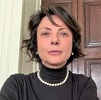

 +39 045 802 7980
+39 045 802 7980

